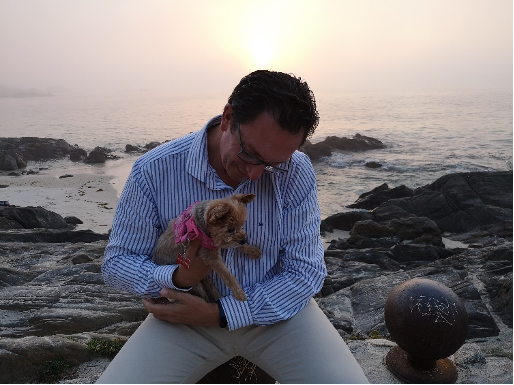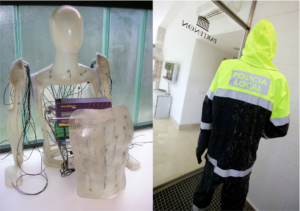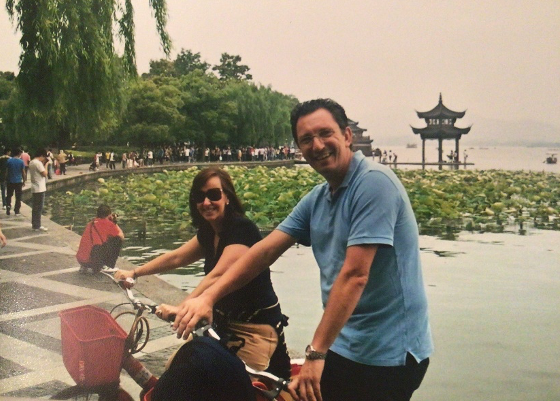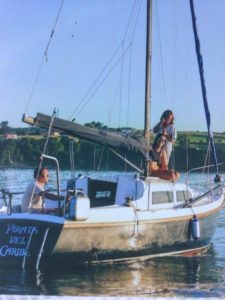Meet our Vice President for Conference Activities, Juan Jose Rodriguez-Andina
Regular people call him Juan, but in the IES family, he is known as Juan-Jo. It was a pleasure to interview our IES Vice President for Conference Activities to get to know him better, professionally and personally. Check our full interview and learn more about “Captain” Juan-Jo and about the exciting projects our community will experience the next two years!
ITeN team: Dear professor, thanks a lot for being with us today, can you start by telling us about your profession and education background?
I originate from a village by the sea, in Galicia, the North West region of Spain. But I moved to Madrid for my college career and got my master’s degree in 1990 from the Technical University of Madrid. As a continuation of my master thesis, I remained there for a couple of years as a researcher, working on an industrial project for the Spanish railway company. By the way, the project received a national innovation award.
In 1992 I went back to Galicia and to the sea side. I moved to Vigo where I got my PhD in microelectronics design “Synthesis methods for fail-safe electronic systems implemented in field-programmable devices” in the University of Vigo.
And I eventually became a professor with the Department of Electronic Technology.
Mainly my basis is Vigo and its region, but I try to keep contact with all over the world.
In 2010-2011, I worked as a visiting professor in North Carolina State University in the USA. I also lectured summer courses at the Harbin Institute of Technology in China between 2015 and 2017.

ITeN team: You seem to have had different research interest; can you tell us more about it?
My original interest was in the application of embedded systems to industrial electronics with a strong focus on applied research for industry.
When I moved to Vigo, I switched to microelectronics design for my PhD, particularly on methods for detecting and mitigating faults in digital electronic circuits and, specifically, field-programmable devices.
After some years, I went back to industrial electronics for industry. Much of my work since then has been related with consulting for companies mainly, but not only, in the Vigo area. As an engineer, I am quite proud of this collaboration with industry because together with my team, we managed to develop innovative systems that helped companies consolidate as leaders in their respective markets and are beneficial for the society. I will give you a few examples.
- We developed a real-time monitoring system for early detection and mitigation of the effect of breakages in electrodes of high-power arc furnaces for silicon metal production, which was patented in the EU and USA.
- More recently, we worked for a leading European company in the fabrication of professional garments for policemen and firefighters, in the development of their facilities to test waterproofness and fireproofness of the garments, as well as in the integration of electronics in the garments, particularly to improve firefighters’ safety.
- We were also strongly involved in a project that eventually led to the creation of a company devoted to the development of systems for energy generation from marine streams.

ITeN team: Apart from Industry experience you just mentioned, what would be the highlights of your career?
In IES, I am a good example of how this society welcomes new people who are motivated and active.
I started my involvement in IES conferences 20 years ago, mostly in IECON and ISIE. Then I got involved in Technical Committees, and after some years I became chair of the one on Education. I increasingly contributed to conference organization. For example, ISIE 2007 in Vigo was at the time the most successful ever! People that were here have good memories and still talk about it when they meet me. That is an enormous satisfaction.
I became an Administration Committee member, then a senior AdCom member. In 2013, I was appointed as Editor-in-Chief of IEM (IEEE Industrial Electronics Magazine). Then I was appointed as VP for Conference Activities. By the way, my term concludes this year. In January 2022, the new VP for Conference Activities will be Yang Shi, from University of Victoria in Canada. But, of course, I will keep being strongly involved in this and other IES activities.
In 2020, I received the Anthony J. Hornfeck Service Award “for diligent work and significant contributions to IES conferences as VP Conference Activities and to IES Publications as IEM EiC”.
“IES is a place where, if you are committed, you get the chance to develop very interesting and challenging professional activities. It is an excellent way to develop your career. Plus, in IES we are a family with very good personal relationships. I think I gave a lot for the society, but got also a lot in return, both professionally and personally. It is being an amazing journey.”
ITeN team: Of course, you are also the Vice-President for Conference. What would be your mission in our Industrial Electronics society?
My main task has been to plan and monitor the evolution of IES conferences and to ensure the quality of a wide portfolio of events every year.
What is special about IES society compared to others, is that we have a VP for Conference Activities, but also a VP for Workshops Activities (currently Huijun Gao, from Harbin Institute of Technology, China). We need to share workload because the number of our events is high and their scope very wide.
The VP for Conference Activities portfolio includes 15 events. Note that there are editions of these conferences recently held, close to be held, or in preparation for future years, plus new proposals. That makes about 40-50 conferences active in a way or another at any given time!
“The Conference Activities workload wouldn’t be possible to handle without the IES closely coupled community, highly cooperative people, committed and experienced volunteers. With tens of amazingly efficient and hardworking organizers, and thousands of high-quality authors and reviewers, it’s a real team work.”
My second main task is to coordinate conference activities with those of Publications, Technical Activities, and Membership promotion. IES has been doing pretty well for years because these different areas work very closely. In the end it’s a win-win situation: Technical Activities contribute to Conferences – and also benefit from them. Same with Membership, our meetings are a way to make people aware of what the society can offer, and therefore promote membership.
Thanks to that, the indicators are good: participation is very good, even in this pandemic time. Of course, Covid-19 affected us a lot like all others, but less than in other communities or societies. And this is because we keep a very strong community, have committed volunteers, and provide events with a very high level of quality.
Of course, online meetings are different from face-to-face meetings, as personal interaction is one of the most important things about conferences. But we managed to keep good events in these difficult times, so we can be satisfied to some extent.
My third task is related to the coordination of a strategic initiative to develop a new set of conference management tools, the IES Conferences Community.
IES SUBMIT tool, developed by our awesome volunteers at the Web and Information (WIC) committee, did an excellent job during the last 20 years. But technology and society have evolved so much during this time that IES recently considered to develop a new solution to respond to today’s needs.
The world has changed a lot, the way we interacted in the past will not be the same in the future, so we need adapt to that. I am closely working with Antonio Luque, from IES WIC, to make this happen.
ITeN team: This New Submission and review tool you just mentioned, is probably the highlight of your leadership as VP Conferences, as it has been deployed to all IES conferences. What was the motivation behind it and which features will it add?
The motivation was to extend our support not only for organizers but also for managing aspects of conference committee. But also, to create a more tightly coupled community.
“What we had in the past was a submission and review system. We are now integrating the management of approval and monitoring, live discussions, but also off-line discussions, multimedia content and a way for all the people to be connected before during and after a conference.”
Agenda:
Building this comprehensive eco-system is a multi-year initiative that will impact all areas of IES. A couple of professional programmers are full-time devoted to develop the system.
- In 2021, we started to provide support to conference organizers for only a few conferences.
- In 2022, all conferences will use the new submission tool and new features will be gradually added.
At the moment, we are working on the set of tools to support the operation of the IES Conferences Committee. - Finally, we will integrate the last working package related to social media and multimedia.
We are planning to have a stronger integration with social media and other initiatives like ITeN, to make IES conferences visible and open for interaction at all time. - In the long term, the goal is to have a system where all people involved in IES conferences (authors, attendees, students, exhibitors, organizers, or officers) will have the possibility to interact, not only during the specific events, but all year round.
ITeN team: Which advice(s) would you give to boost our reader’s career?
I think two main things have always to be kept in mind:
First, if you want to have success – I mean not only to have results, but also to be happy or proud of what you do – remember that the world is rapidly changing and becoming a single place or a closely connected community. We need to be educating ourselves all the time!
Particularly in technology, where our education never ends, we have to continuously update our knowledge and experience.
Second, because the world is so tightly connected, you cannot just be in your comfort area. There are lot of opportunities to learn and to move all over the world. Learning, teaching, sharing experiences is a key for success. Creating some relations with people from different culture background will enrich you. You will realize how big (and, at the same time, small) the world is and that there are many different ways of thinking, none better than the other.
IES is a great place for achieving both goals!!

ITeN team: If ever you manage to get some free time, what are your hobbies? Be careful, because Yousef covered the air, Roberto covered the ground, so you’re expected to bring it to the next level!
No problem, I happen to have a small boat… so I will cover the sea!
More seriously, I always try to have time for personal life. I am a strong family guy – for me it is the most important thing in life. So, I try to enjoy my family as much as I can.
I particularly enjoy anything related to the sea. With my small boat, I take my family and friends to the sea. This is the place where I am most happy.
When you are on the sea, it’s only you, the nature, and the company… and it is a very rewarding experience. I do that as much as I can. And I am lucky enough to live in a place where the mild climate allows me to do it all year round.

I also enjoy traveling. Unfortunately, for the last couple of years this has not been possible. But until then I was able to travel all over the world to many different places and to know many different cultures. And I hope we all be able to do it again in the near future. When you travel, you open your mind and get a lot of good experiences.
“They say travel is the only thing you spend money in but in the end makes you richer.”
We would like to thank Prof. Juan Jose Rodriguez-Andina for his time and wisdom, it’s been a very pleasant and interesting moment.
Stay tuned, we will soon interview other IES officers…

